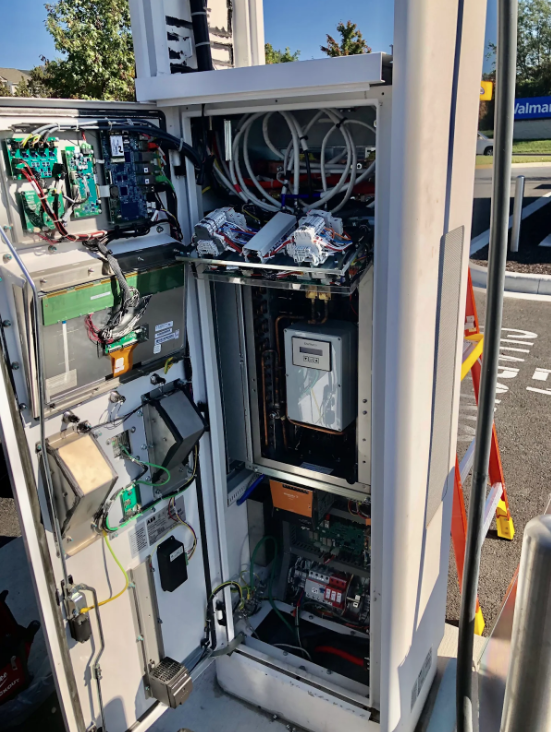Why Are So Many EV Charge Stations Broken?
As electric vehicles (EVs) gain popularity, the demand for reliable and efficient charging infrastructure has skyrocketed. Unfortunately, many EV users are frustrated by the frequent breakdowns and malfunctions of public charge stations. This raises the question: why are so many EV charge stations broken?
1. A Rush to Market
The rapid growth of the EV industry has pushed manufacturers to rush their products to market. In an effort to meet soaring demand, some companies have sacrificed quality for speed. This rush often results in charging stations that are poorly tested, hastily assembled, and prone to failure.
2. Cheap, Low-Quality Components and Poor Engineering Design
Many of the charging stations currently in use are built with cheap, low-quality components that are not designed to withstand harsh environmental conditions. The poor engineering design often leads to reliability issues, frequent breakdowns, and the need for constant maintenance. For example, components that should be weather-resistant or heavy-duty are sometimes swapped for cheaper alternatives that degrade quickly.
Here is an example of a charge station where the cable retraction is too strong, and it put such a force on the connector that it broke in under a year of operation. Some LEDs are already failing and the charger installation required caulking on the top screws which is also failing which can lead to water damage.
3. Off-the-Shelf Components Instead of Dedicated Engineered Parts
Instead of using parts specifically engineered for charging applications, many manufacturers rely on off-the-shelf components that may not be well-suited for EV charging demands. This can lead to compatibility issues, inefficiencies, and a higher likelihood of failure under heavy usage.
Here is an example of a charger in the Charge America network which is notorious for having problems, and given this image, you can imagine why!
4. Complicated Wiring and Maintenance Challenges
Another common issue is the complicated wiring within these charge stations. Many rely on a web of screw terminals and connections that are difficult to diagnose when a problem occurs. This complexity often requires trained technicians to perform even simple maintenance or repairs, driving up costs and downtime.
The above charger above is a good (or depends how you look at it, bad) example of this. Another example is this wall-mount charger:
5. Cheap Enclosures Prone to Corrosion
The enclosures of many charging stations are made from cheap, painted materials that are prone to corrosion, especially in harsh climates. Corroded enclosures can lead to serious safety hazards and further contribute to the unreliability of these stations, not to mention make for a big eye sore. Here is an example of a rusty charger after a few years in operation.
Teal's Approach to EV Charging Infrastructure
At Teal, we recognized these widespread problems early on and set out to engineer a different kind of EV charge station. Our charging stations are designed with longevity, reliability, and ease of maintenance in mind:
High-Quality, Durable Enclosures: Teal's charge stations feature aluminium powder-coated enclosures that resist corrosion and harsh weather conditions, ensuring a longer lifespan of 10-20 years in the harshest conditions.
Engineered from Scratch: Every part of our charger is designed specifically for this purpose. Unlike many competitors, we do not rely on generic, off-the-shelf components. This ensures better integration, reliability, and performance. Seen in the image below, there are a minimum number of parts and wiring, reducing the chance of failures and making servicibility easier.
Automotive-Grade Wiring Harness: Instead of complicated wiring with numerous screw terminals, our charge stations use an automotive-grade wiring harness. This significantly reduces the complexity of the system, making it easier to diagnose and repair issues.
User-Friendly Maintenance: Our charge stations are designed to be serviced without the need for specialized technicians. This approach not only reduces downtime but also lowers maintenance costs for operators. In the main control board here, automotive connectors are used for reliable connections, and there is only one possible way for them to connect, meaning trained technicians are not required.
Conclusion
The reliability of EV charging infrastructure is critical for the growth of the electric vehicle market. At Teal, we believe that quality engineering, robust components, and thoughtful design are key to providing reliable and long-lasting EV charging solutions. As the market evolves, our approach is to offer solutions that are built to last and designed to keep EVs on the road, not stranded at a broken charger.








